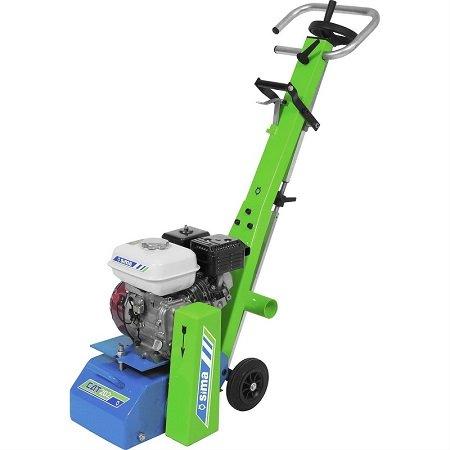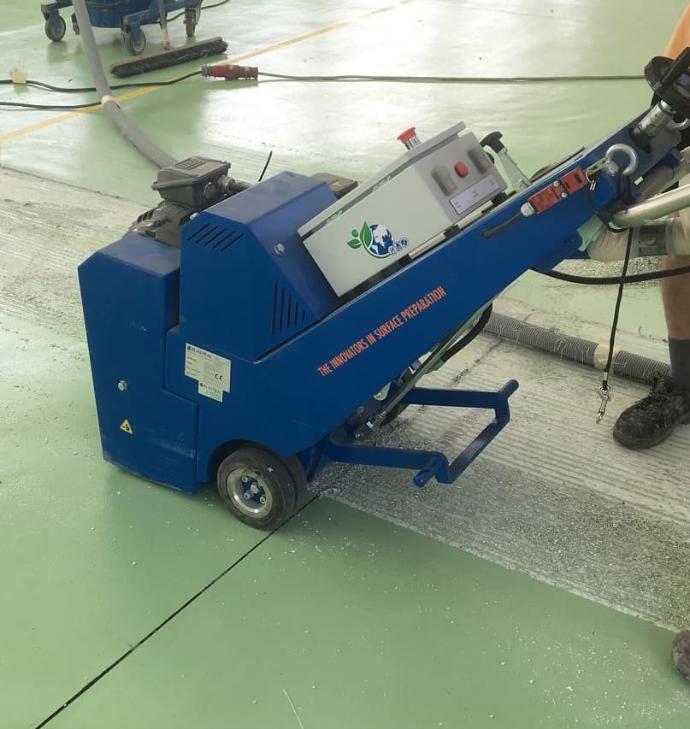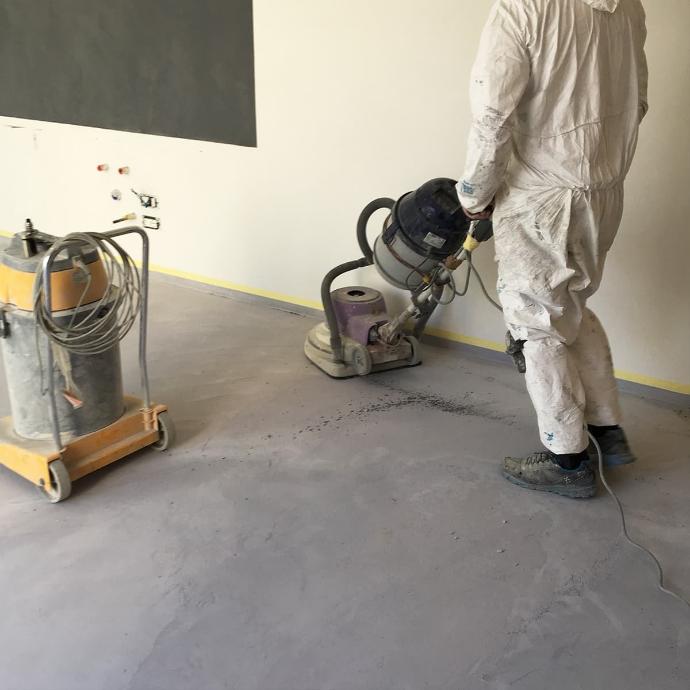A careful assessment of the condition of the substrate and a conscious selection of the method of preparation can drastically reduce the probability of failure of all surface restoration and/or renovation works. A number of assessments to be carried out prior to the application of Ecobeton impregnation treatments and coatings are suggested, and the most suitable methods for adequately preparing the substrate are described
:
Whenever a surface restoration/renewal is planned, different operational conditions and requirements may occur and they require a critical approach for assessing the appropriate type of coating. Whichever system is used, the success of the work will in any case depend on the correct preparation of the substrate. The choice of a suitable method for obtaining a healthy substrate will be influenced by many factors such as
:
1. Intrinsic conditions of the substrate: strength, presence of adhesion inhibiting materials, previous coatings.
2. Owner's requirements: the customer's need to avoid any interruption of the business or the concern about potential damage to the surrounding area limit the available options.
3. Material requirements: The requirements for surface preparation will differ depending on the selected coating.
4. Application conditions: temperature and/or weather conditions will influence the choice of surface preparation methods.
Sometimes surfaces can hide defects that lead to coating failure if they are not identified before starting the application.
Is the substrate (concrete, screed, etc.) structurally sound?
First, the surface to be coated must be structurally sound. No coating stabilises the structures and an inconsistent substrate cannot be properly restored. If the structure is seriously compromised, removal and refurbishment should be taken into due consideration.
Is there a vapour barrier?
Ecobeton coatings are not affected by the intrinsic humidity of concrete casting, but certain precautions must be taken in order to avoid the risk of detachment if rising damp causes saponification. It is strongly recommended to check the presence of a vapour barrier with the following test: take a 1m x 1m nylon sheet and seal it to the ground with tape. After 24 hours, if any moisture is found under the sheet, it will be necessary to open the pores of the surface and treat to saturation using Evercrete® Pavishield. Before applying the coating, at least one week after treatment with Pavishield®, repeat the moisture test.
Are there cracks in the surface to be repaired?
When dealing with the need to repair cracks, it is important to firstly establish the nature and exact extent of the problem. Please refer to the "SA 1 - Crack treatment" application sheet for more details on the assessment to be carried out.
Is the surface to be coated porous?
It must be established whether the substrate is sufficiently porous to ensure adequate adhesion with the coating. To quickly test whether a surface is porous, just pour water onto a small test area. If water stagnates on the surface, it must be roughened. This method also makes it possible to tell whether the substrate was treated with products that hinder absorption. Often before coating a semi-finished floor, for example, it is advisable to roughen the surface. For more information on which method to use, see the "Preparation methods” section.
Is there a previous coating?
The presence of surface coatings (paints, resins, waxes, etc.) may partially or completely hinder the adhesion of a new product. It will therefore be required to remove such layers before performing any further treatments. For selecting the most appropriate system, please refer to "Preparation methods” section.
Were anti-evaporating agents/additives used during casting?
It is often difficult to establish whether a curing agent was employed during casting or whether particular additives (e.g. aerating agents) were used from a mere visual analysis. If you can understand this, it will be of great benefit in the long run. Suspected products include certain anti-evaporating agents, chemical hardeners, release agents or additives to reduce or increase air content or workability. Aerating agents, for example, are sometimes responsible for long-term saponification phenomena that could lead to the detachment of the coating, regardless of the type of surface preparation used.
Is there any efflorescence?
It is important to check whether there is any efflorescence within or around the area to be treated. Efflorescence is a salt deposit that accumulates on the surface of building materials when the water in which these salts are dissolved rises in the floor/wall and evaporates. Efflorescence is a sure indicator of a moisture problem and the area must be properly treated before being coated. Concrete, for example, can be treated with Evercrete® Pavishield® or Vetrofluid®.
Pressure washings
Mainly used outdoors, it has the great advantage of removing loose coatings, cleaning and at the same time moisturising the substrate. It is performed by using high-pressure cleaning machines (200 - 1000 bar). This method of preparation is not suitable for roughening the surface when it is not very porous.

Grinding
Grinding by using diamond discs is a particularly effective method of removing up to a few mm from the surface and making the concrete sufficiently porous by removing layers of resin or other previous treatments. This operation produces a lot of dust during machining, so subsequent cleaning of the surfaces is necessary. It is used in industrial environments.

Sanding
Sanding the surface is possible both outside and inside. It is carried out with the aid of a single-brush machine equipped with abrasive paper (grit ranging from 36 to 120 depending on the condition of the substrate). It is ideal when roughening the substrate by opening the pores of the structure (concrete, screed, semi-finished floor). It is not suitable for particularly intensive work such as removal of resins, impregnating agents and glue residues.
Scarifying (milling)
Scarifying is an economical method which is particularly suitable for external and/or internal floors where large layers have to be removed. The scarifier uses a toothed cylinder to remove from a few millimetres up to a few centimetres of floor crust. It is a fast, practical method (it is a machine of various sizes that can be rented cheaply), but it generates a lot of dust and requires subsequent cleaning of the surfaces.

Shot peening
Another method of roughening the surface is shot peening. The machine uses small steel balls that strike the surface at high speed, enabling the removal of any existing coatings (resins, paints, etc.), dirt, cement
slurry and other surface contaminants. This method is the safest as the process is confined in the machine's casing, which separately collects the powder and balls for reuse. It is recommended for industrial applications and large
areas.

Acid attack with neutralisation
Although this method is not recommended, it should be taken in consideration if the other methods described above are not feasible. The surface is washed with an acid solution (muriatic acid diluted
in water at a ratio of 1:4, i.e. 4 parts water to 1 part acid) and massaged with a stiff broom. Subsequent neutralisation of the acid with sodium bicarbonate is mandatory when the acid stops reacting. Dissolve 1kg of bicarbonate per
20L of water and leave for at least 20 minutes. Finally, rinse thoroughly to remove any unwanted substances from the surface.

Surface preparation for durable overlay